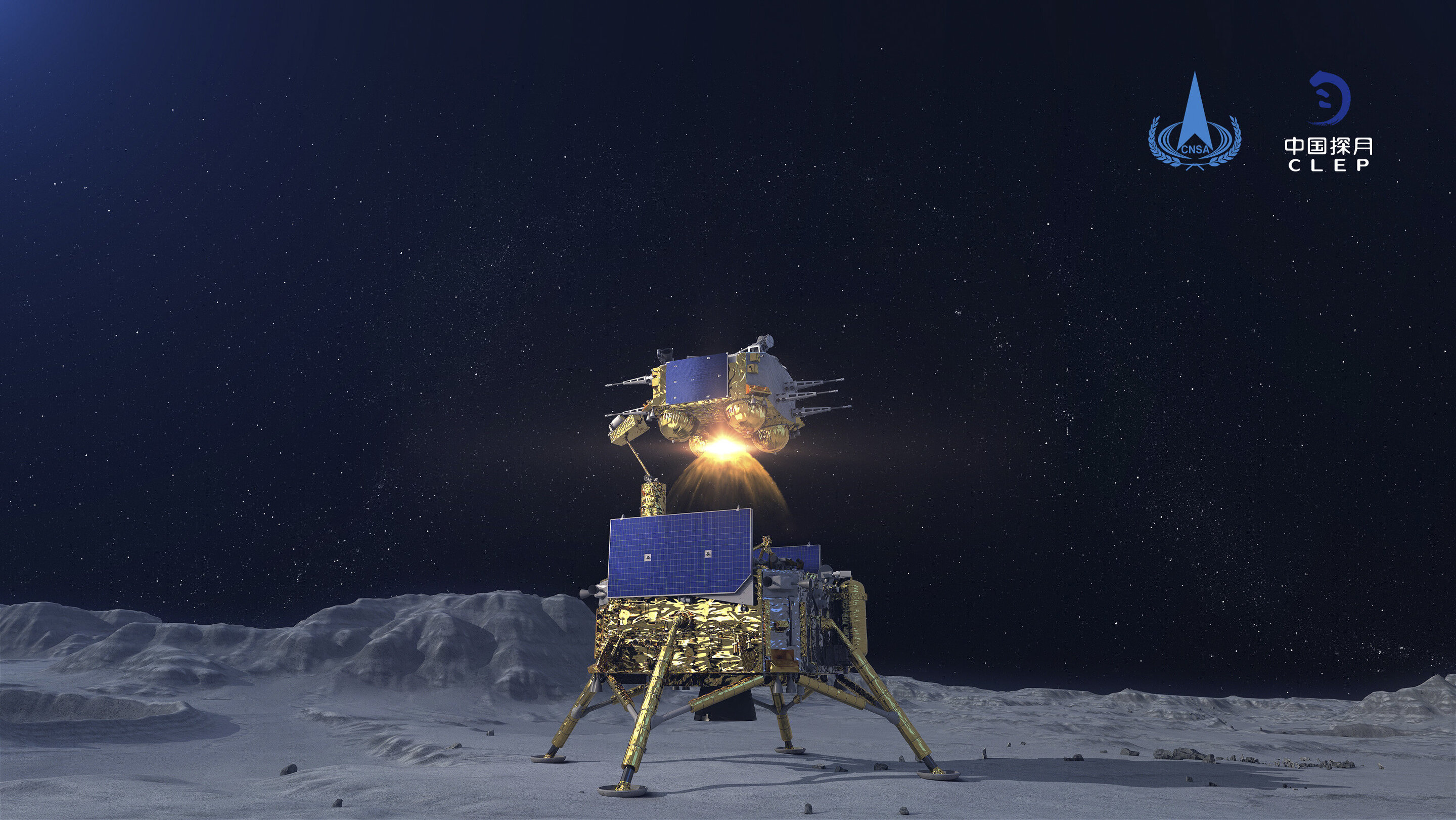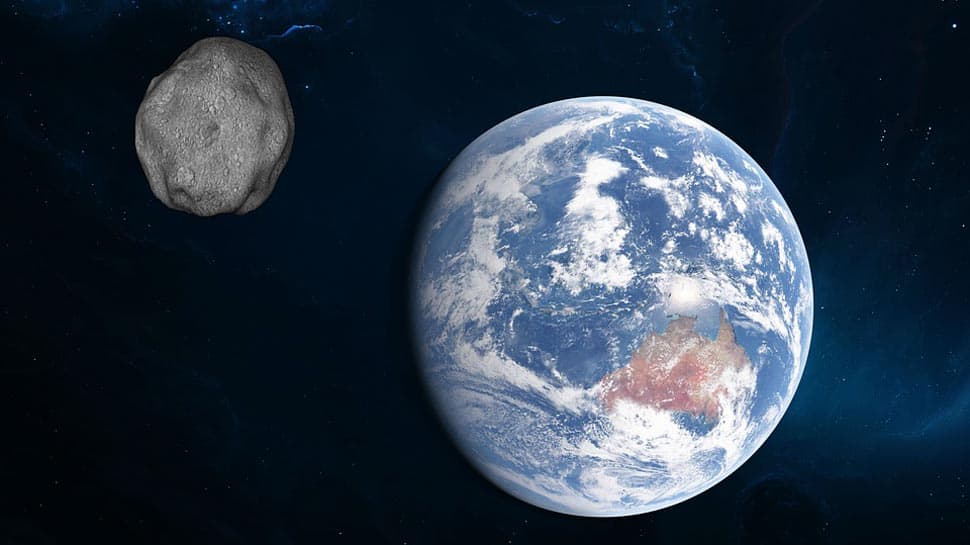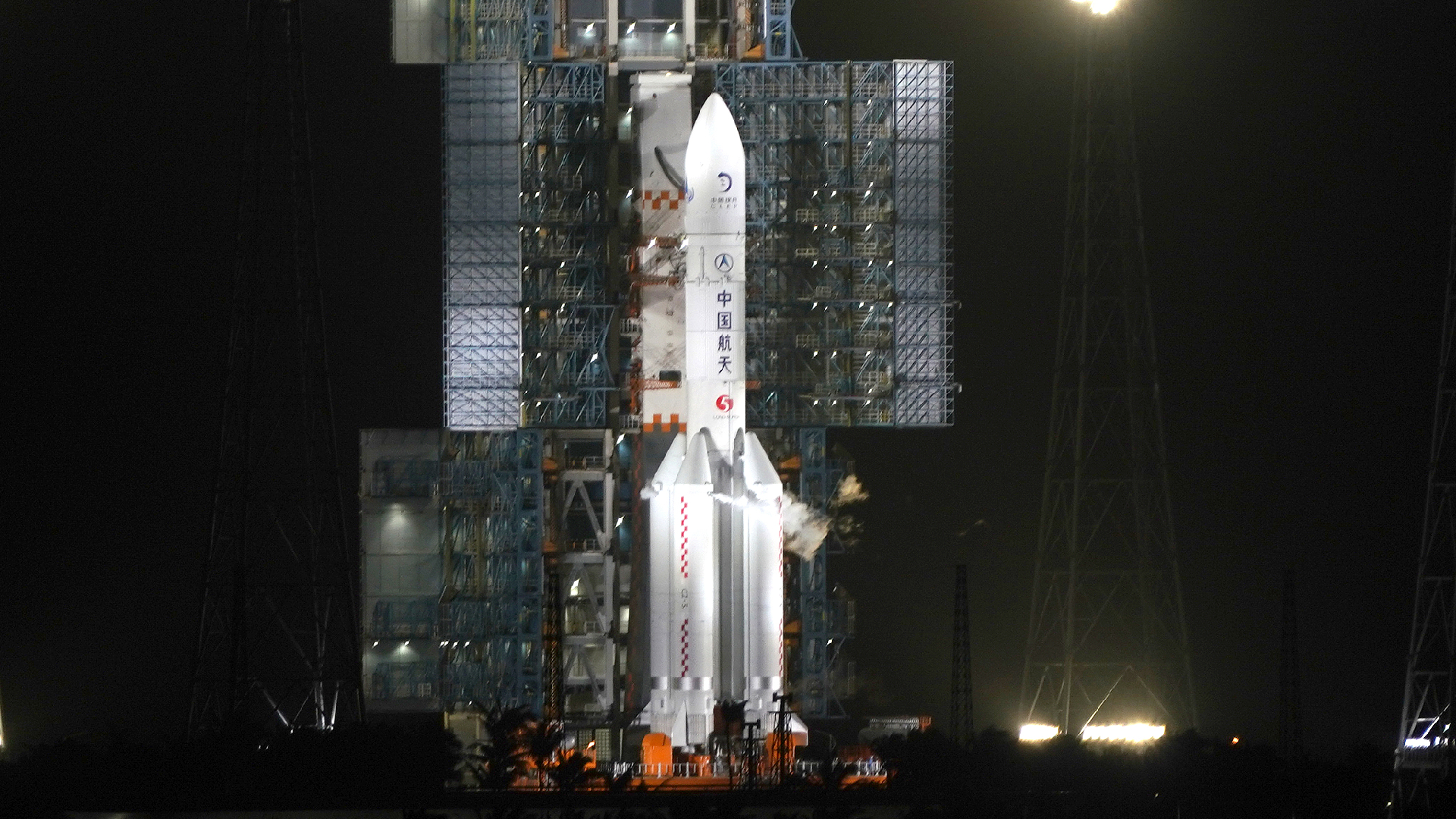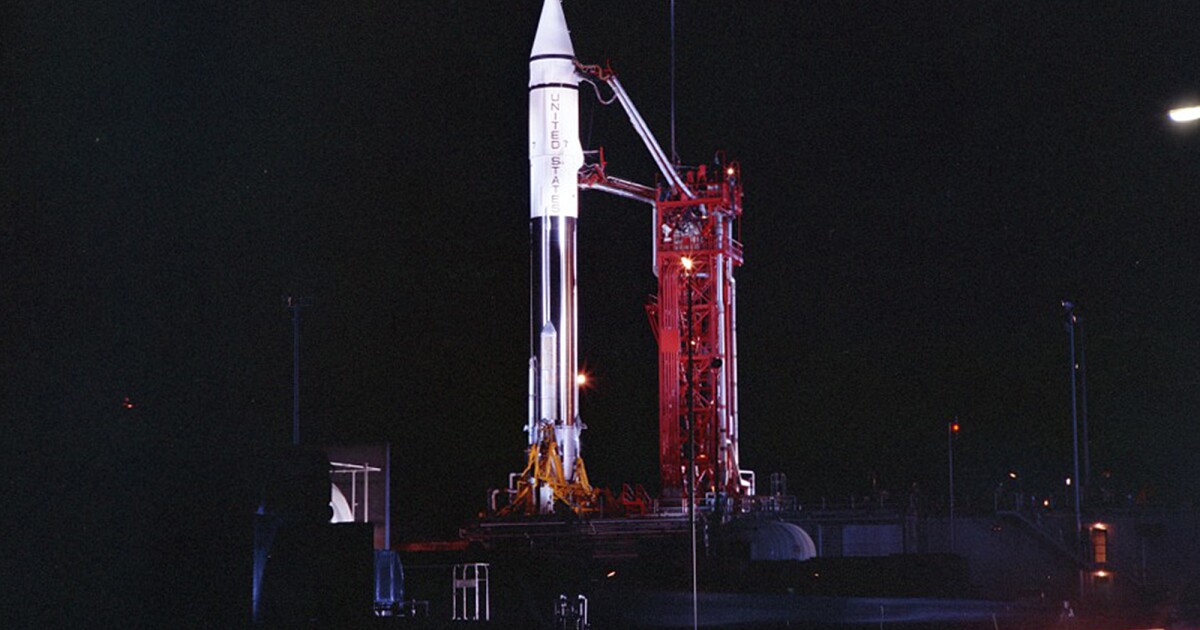
The orbiter and reentry vehicle will circle the moon for another week awaiting a narrow time window to make the roughly three-day, 383,000-kilometer (238,000-mile) journey back to Earth. It will first "bounce" off the Earth's atmosphere to slow its speed before the reentry vehicle separates and floats down on parachutes to land on the vast steppes of Inner Mongolia, where China's Shenzhou crewed spaceships have also made their landings.
If the mission succeeds, it will make China the third country after the United States and former Soviet Union to bring moon rocks to Earth. They will be the first fresh samples of the lunar surface obtained by scientists since the Soviet Union's Luna 24 probe in 1976.
In case you are keeping track:
Royal Mint's commemorative David Bowie coin orbits Earth | People | dothaneagle.com

A commemorative coin created in honour of late music legend David Bowie has been launched into space.
A silver coin, which is up for grabs in a competition on their official Facebook page, orbited the Earth's atmosphere for 45 minutes.
The coin features the iconic lightning bolt painted on Bowie's face for the artwork for his seminal album, 'Aladdin Slane', and is in honour of the beloved track 'Space Oddity'.
* * *
Clare Maclennan, divisional director of commemorative coin at the Royal Mint, said: "We are thrilled to unveil the third coin in the Royal Mint's music legends series, honouring the intergalactic legacy and career of David Bowie.
Scientists get the lowdown on sun's super-hot atmosphere: Orbiting instrument hints at how stored
![]()
A phenomenon first detected in the solar wind may help solve a long-standing mystery about the sun: why the solar atmosphere is millions of degrees hotter than the surface.
Images from the Earth-orbiting Interface Region Imaging Spectrograph, aka IRIS, and the Atmospheric Imaging Assembly, aka AIA, show evidence that low-lying magnetic loops are heated to millions of degrees Kelvin.
Researchers at Rice University, the University of Colorado Boulder and NASA's Marshall Space Flight Center make the case that heavier ions, such as silicon, are preferentially heated in both the solar wind and in the transition region between the sun's chromosphere and corona.
NASA says mystery object is 54-year-old rocket, not asteroid - Los Angeles Times
A mysterious object temporarily orbiting Earth is a 54-year-old rocket and not an asteroid after all, astronomers confirmed Wednesday.
Observations by a telescope in Hawaii clinched its identity, according to NASA's Jet Propulsion Laboratory.
Chodas was proven right after a team led by the University of Arizona's Vishnu Reddy used an infrared telescope in Hawaii to observe not only the mystery object but also a Centaur from 1971 still orbiting Earth. The data from the images matched.
Were you following this:
Object temporarily orbiting Earth is not an asteroid; here is what NASA says | India News | Zee

Scientists collected data using Infrared Telescope Facility (IRTF) and orbit analysis from CNEOS at NASA`s Jet Propulsion Laboratory to confirm that Near-Earth Object (NEO) 2020 SO is not an asteroid.
Washington: Using data collected at NASA`s Infrared Telescope Facility (IRTF) and orbit analysis from the Center for Near-Earth Object Studies (CNEOS) at NASA`s Jet Propulsion Laboratory, scientists have confirmed that Near-Earth Object (NEO) 2020 SO is, in fact, a 1960`s-Era Centaur rocket booster.
Enos, the chimp that orbited the Earth - The Hindu
Enos with his handler (left) and pictured wearing a space suit and lying in his flight couch as a handler holds his hands (above). | Photo Credit: NASA/ Wikimedia Commons
It is well established that the Space Age was essentially a two-horse race to begin with, with Soviet Union and the U.S. being the two protagonists. And while Soviet Union did have the early lead, the Americans caught up and achieved the first human landing on the moon, which was at the forefront of both countries' objectives.
China's Chang'e-5 lunar probe successfully brakes for lunar orbiting - CGTN

China's Chang'e-5 lunar probe successfully decelerated near the Moon and entered the lunar orbit, the Lunar Exploration and Space Program Center of the China National Space Administration (CNSA) announced on Saturday.
The administration said in a statement that a 3,000-newton-thrust engine on the spacecraft was activated at 8:58 pm Beijing time and worked about 17 minutes when the probe reached a position about 400 kilometers above the moon.
A key orbital control measure for any lunar mission, the braking operation was conducted to reduce the spacecraft's speed to make sure it can be captured by the moon's gravitational field rather than accidentally flying past the celestial body.
Bad Astronomy | A very ancient globular cluster orbits the Andromeda Galaxy

Astronomers have found that a giant cluster of stars orbiting the Andromeda Galaxy is incredibly deficient in heavy elements, so much so that it totally blows away any previous record. This likely means it's terribly ancient, perhaps older than any other such cluster ever seen. It also changes what astronomers think about how such clusters are born.
* * *
Globular clusters, if you missed it the first 200 times I wrote about them , are spherical collections of stars, usually hundreds of thousands if not over a million, all packed into dense balls usually a hundred or so light years across. Stars are so close together in the core that there can be thousands in the volume of space that could fit between the Sun and Alpha Centauri, the nearest star system to us.
Happening on Twitter
A Chinese probe is orbiting the moon in preparation for returning rocks and debris from the lunar surface to Earth… https://t.co/LTH2bH9Brh AP (from Global) Mon Dec 07 08:26:26 +0000 2020
A Chinese probe carrying samples from the lunar surface successfully docks with a spacecraft orbiting the moon, in… https://t.co/XKvuLhJhk9 AFP (from France) Sun Dec 06 05:43:00 +0000 2020
A Chinese probe was orbiting the moon on Monday in preparation for the returning of samples of the lunar surface to… https://t.co/N2iezwhfpG CBSThisMorning (from United States) Mon Dec 07 22:29:40 +0000 2020
The China National Space Administration has revealed on Friday the image of a Chinese national flag displayed on th… https://t.co/zU15dZd4sj PDChina (from Beijing, China) Fri Dec 04 11:10:03 +0000 2020

No comments:
Post a Comment